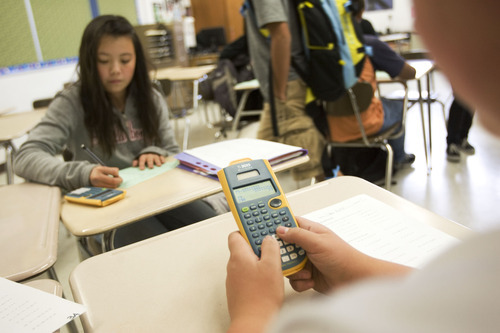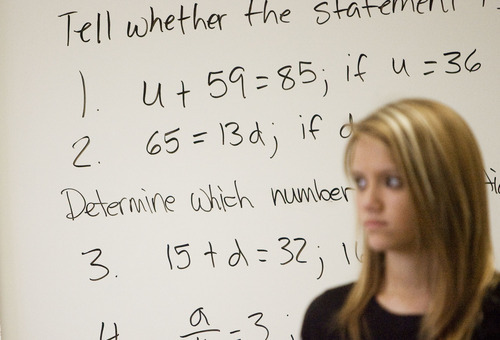This is an archived article that was published on sltrib.com in 2011, and information in the article may be outdated. It is provided only for personal research purposes and may not be reprinted.
Utah students perform at or above the national average in reading and math, but the state has not made significant progress when it comes to making sure all students — regardless of ethnicity or economics — achieve at the same level, according to The Nation's Report Card released Tuesday.
Every couple of years, samples of students in certain grades throughout the country take National Assessment of Educational Progress (NAEP) tests in different subjects, and the results are then reported as part of the Nation's Report Card.
This year, Utah fourth- and eighth-graders scored at or slightly above national averages in reading and math on the nationwide tests, but their scores did not change significantly since the last time the tests were given two years ago. Nationally, the average fourth-grade math scores and eighth grade reading and math scores nudged ahead by one point. Fourth-grade reading scores remained the same.
In math, students are tested in five areas: number properties and operations; measurement; geometry; data analysis, statistics and probability; and algebra. For the reading test, students answer questions designed to measure reading comprehension on two types of texts, literary and informational.
In Utah, most gaps between the scores of white and Latino students, and gaps between students from low-income families and wealthier ones, haven't changed much in reading or math since the 1990s, when NAEP was first administered.
The only exceptions are in eighth-grade math, where those gaps have grown wider since the 90s.
All but fourth-grade reading scores for all groups combined, however, have generally increased in Utah over the past two decades. Fourth-grade readings scores on the NAEP are about the same as they were in 1992.
"We've pretty much held steady with fourth- and eighth-graders overall" since the last report card, said John Jesse, director of assessment and accountability at the State Office of Education. "The achievement gap is still an issue across the country and in Utah. It's not going to go away on its own. It just indicates it's still an issue we need to continue to address with good thinking and resources."
Isaiah "Ike" Spencer, chairman of the state school board's Coalition of Minorities Advisory Committee, said he's not surprised the gaps haven't changed much given the state's education funding. Utah has the lowest base per pupil spending in the nation, largely because of the state's high proportion of children to adults and large amounts of public land.
"We're finding more and more schools becoming urban schools, and we're not that prepared statewide to work with urban schools with the system we have now," said Spencer, who is also principal at West Lake Junior High in West Valley City. "You can't continue to put 35, 40 kids in a classroom and think everybody's going to learn."
He said it's also troubling that lawmakers cut millions this year from programs that serve at-risk students.
"Being a junior high principal, I sit in meetings with kids who think no matter how hard they work, the results are not going to be any different than what they were for their parents," Spencer said. "I think they see a lot of us putting a lot of programs into place and then, when they get hooked into those programs, there's not funding to continue those programs, so they go away."
From October 2008 to October 2010, the portion of Utah students receiving free or reduced-price school lunches climbed from 32.8 percent to 37.2 percent, according to the State Office of Education. At the same time, per pupil funding dropped from $6,564 to $6,255, largely due to lower income-tax revenue, the office noted in a news release.
"Utah public schools have been able to hold on to their core academic performance levels despite increasing poverty, increasing demographic diversity and decreased funding," State Superintendent Larry Shumway said in a statement. "This is not great news, but it's not bad news and we intend to increase performance as the economy improves and Utah schools obtain new resources to increase academic achievement."
More online
O Read more information about The Nation's Report Card. > nationsreportcard.gov











